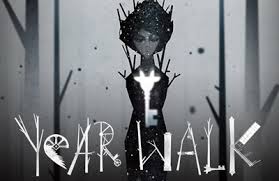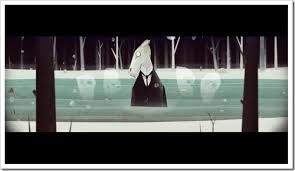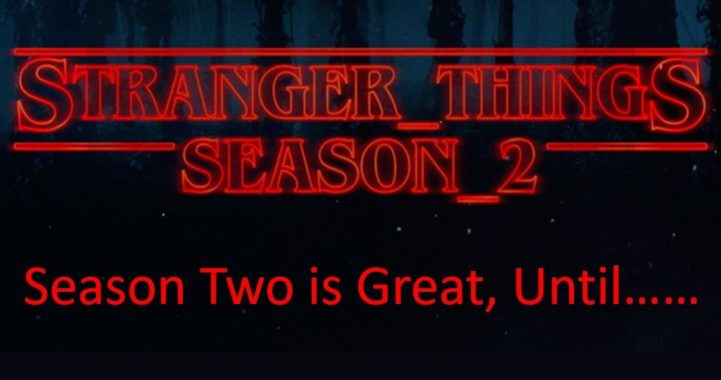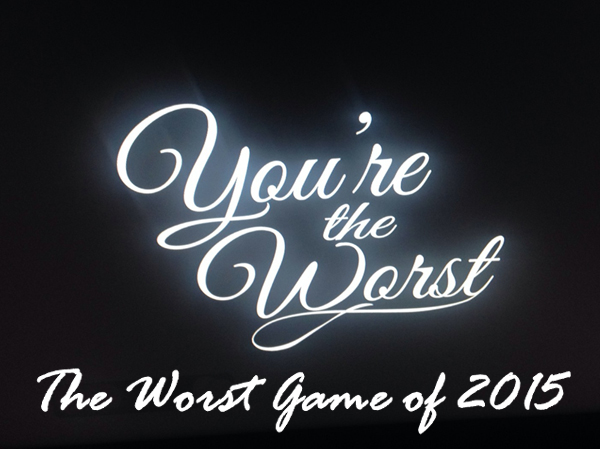
Taking a Year Walk with Device 6
I am loving the new generation of cheap, concise, innovative games. For the cost and the time, I would say that Gone Home and the Stanley Parable were some of the best gaming experiences I had this year (which we’re deeming the year of the indie game). Two of the best ones to emerge this year are Year Walk and Device 6, both by Simogo. Both games do a great job utilizing the iOS for puzzle solving. While both are involving and atmospheric puzzle games, they each provide unique gameplay experiences.
Year Walk

Year Walk is the more traditional title (in terms of gameplay) and is the scarier experience of the two. It’s difficult to describe the plot without giving away too many details but suffice it to say that you’re wandering around a forest solving puzzles involving various supernatural creatures who seem to have clues that can help you in your quest to predict an important future event. It is a creepy, atmospheric experience and the cartoony graphics coupled with the somber death-related themes makes the experience feel like Charlie Brown’s Great Pumpkin crossed with Silent Hill (which, arguably has already been done). 
The game gets truly innovative in one puzzle which relies primarily on sound and by the time you’re gathering up dead ghost babies, you start to realize that you’re playing one unusual title. It does suffer a bit from making you guess what to do and try to figure out what you can interact with (you’ll be tapping at the screen like an idiot at parts), but the payoffs are more than worth it.
Device 6
Device 6 is the far more polished experience. Trapped on an island after being gassed, your protagonist Anna must make her way through a series of puzzles and try to solve the mystery of how she got here in the first place. The interface this time is a winding line of text which you can read at your pace and to revisit a room, you simply scroll back through the text your previously read. There’s an interesting learning curve in the game in that it takes a little while to realize what the puzzles are and how to solve them, but once you get cracking on the first one, the others soon fall in to place. You aren’t going to need the cheat here but some of the puzzles are so innovative, you’ll be dying to show them to someone else (just so you can lurk over their shoulder and murmur “getting warmer!).” As if the game itself doesn’t make you somewhat nostalgic for Cold War paranoia and The Prisoner, it definitely will remind you of the old classics like Zork and Enchanter and Wishbringer and all of those old text based adventures (which were much less forgiving!). Why couldn’t they have evolved this way instead of, you know, that way.
We seem to be moving in a direction of game design that I had not anticipated. Though it has been clear for years that AAA titles will be reaching for a higher and higher ceiling and that this reaching will probably make less ambitious but still enjoyable titles a little more rare. What’s great, though, is that even if the middle-row game go away, there seems to be an ever expanding base of these more modest but highly enjoyable and incredibly unique indie games there to fill the void.
In Conclusion
So what’s missing? INDIE COOP. And I don’t mean indie zombie shooting. Monaco is a good start, but with Long Walk and Device 6 and so many other titles pushing the boundaries, it’s time to bring this innovative design to the two-player arena and see what we can come up with.




Pingback: The Eight Best IOS Games (Summer 2016 Edition) · Coop Dojo · The Bulgogi()